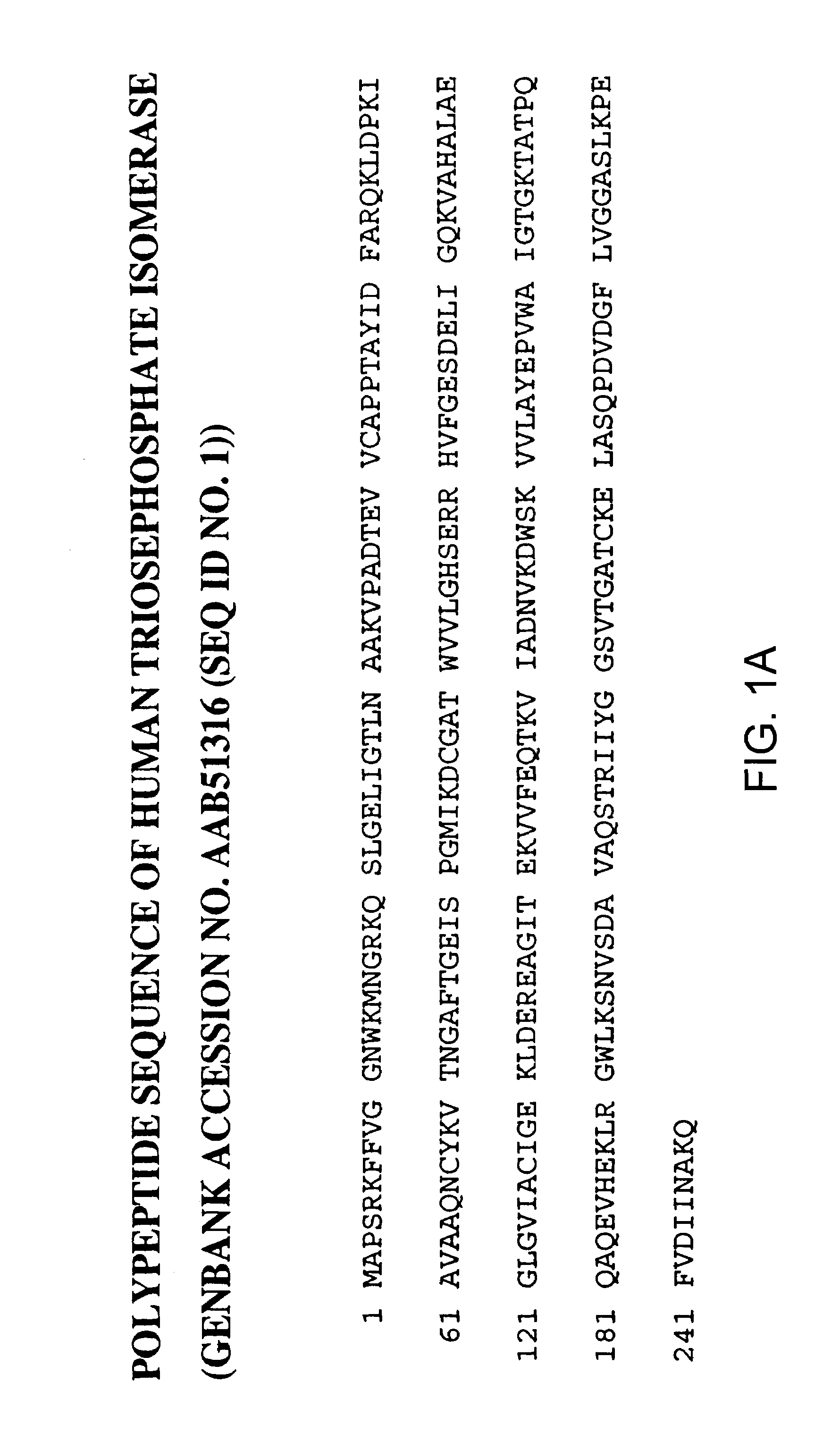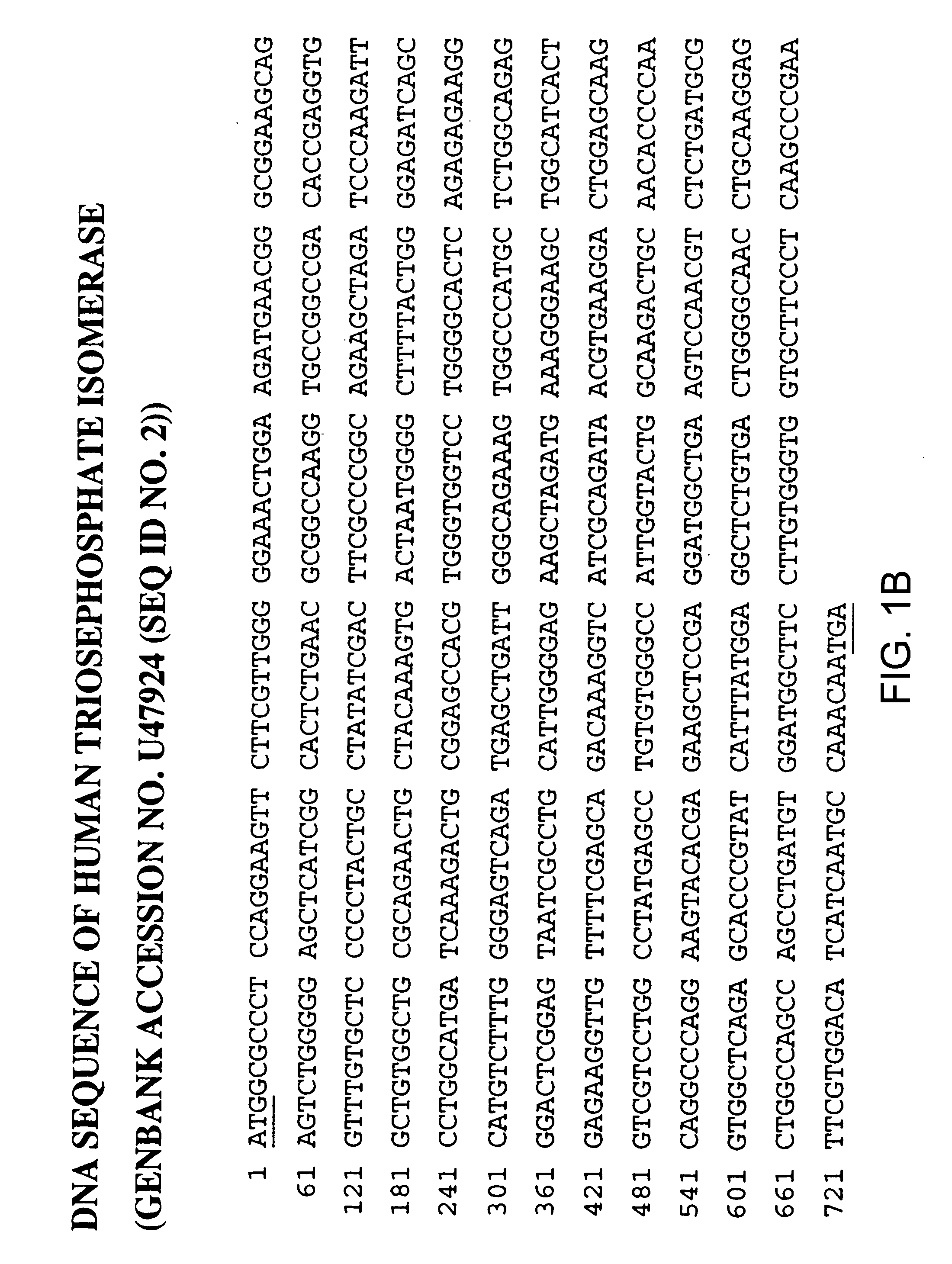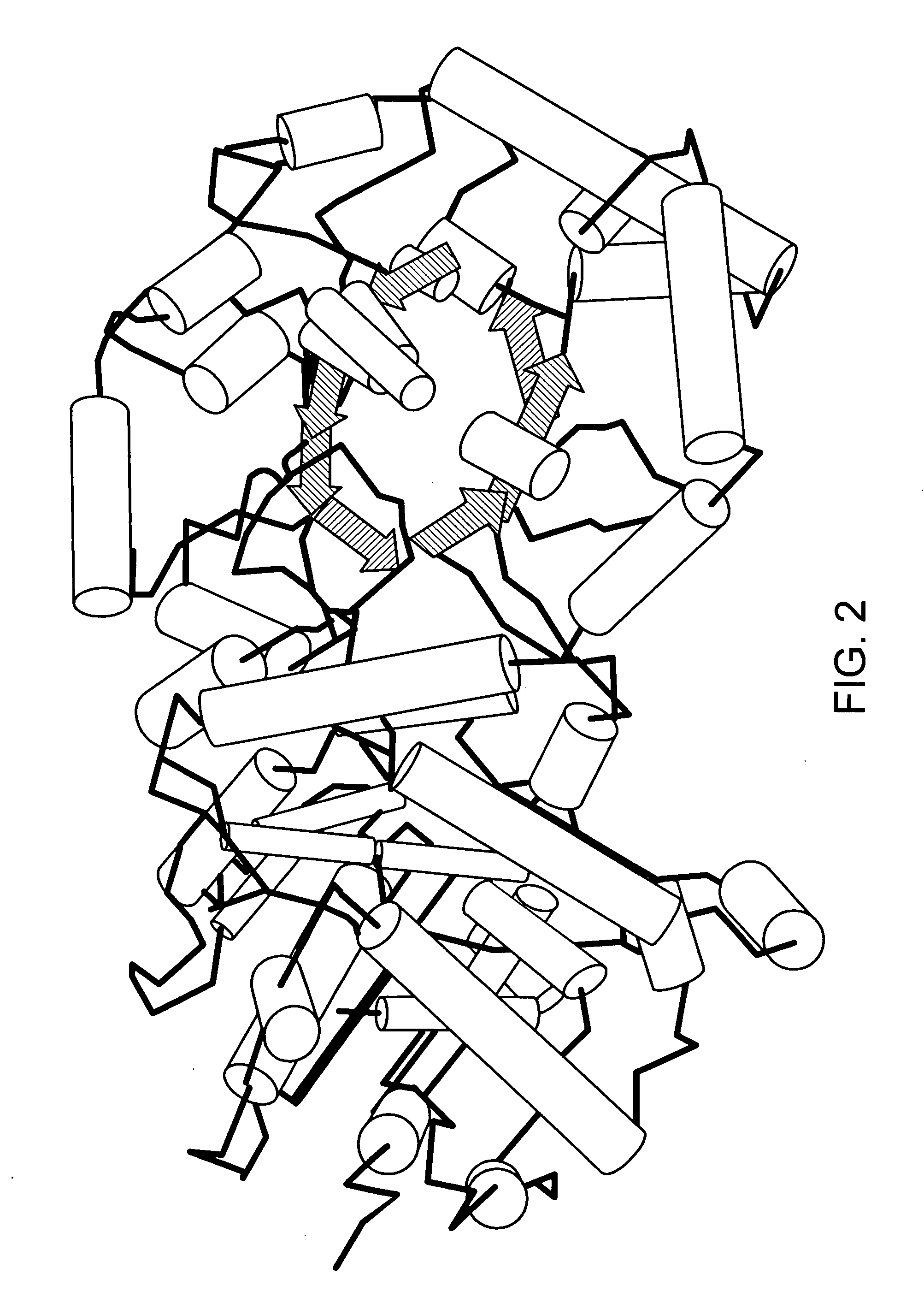Triosephosphate isomerase directed diagnostics and therapeutics for multidrug resistant neoplastic disease
a multi-drug resistant neoplastic disease and isomerase technology, applied in the field of diagnostics and therapeutics, can solve the problems of cancer patients and non-cancer patients with disease, and achieve the effect of improving the survival rate of patients and improving the survival ra
- Summary
- Abstract
- Description
- Claims
- Application Information
AI Technical Summary
Benefits of technology
Problems solved by technology
Method used
Image
Examples
example 1
5.1 Overexpression of TPI in Multidrug ResistantSolidTumor / Cancer Cells
[0314]Studies are performed to determine what proteins, if any, are differentially expressed in multidrug resistant tumor cell lines as compared to their drug-sensitive counterparts.
A. Cells
[0315]The five different cell lines used are described in Table I below.
[0316]
TABLE IMultidrug resistant cell linederived from a clone of theCancer cell tissueDrug-sensitive“parent” drug-sensitive celltype“parent” cell linelineSource of cellsPromyelocyticHL60HL60ARAmerican TissueleukemiaCulture Collection(ATCC), Manassas, VAand McGill UniversityPromyelocyticNB4NB4 / VLBDeutsche SammlungleukemiaNB4 / DOXvon Midroorganismenund Zellkulturen GmbH(DSMZ, Germany) &Aurelium BioPharmaT lymphoblastoidCEMCEM / VLBATCC and Dr. WilliamCEM / ARBeck, AureliumT lymphoblastoidHSB2HSB2 / VLBATCC and AureliumHSB2 / DOXBioPharmaT lymphoblastoidMolt4Molt4 / DOXATCC and AureliumMolt4 / VLBBioPharmaOvarian CancerHeLaHeLa / VLBATCC and AureliumHeLa / CISOvarian CancerS...
example 2
5.2 The 27 kDa Protein is Expressed Extracellularly on Cell Membranes of Multidrug Resistant Tumor Cells
[0328]To determine whether the 27 kDa protein in MDR cells is present on the inside or outside of the cell membrane, intact cells of drug-sensitive HL60 cells, and multidrug resistant HL60AR cells are reacted with a membrane impermeable biotinylating reagent that reacts with the amino acid lysine, and total cell extracts from both drug sensitive HL60 cells and multidrug resistant HL60AR cells are resolved by one dimensional SDS-PAGE and Western blot with streptavidin-HRP conjugate (Amersham, Piscataway, N.J.; RPN 1231). The streptavidin moiety binds tightly to biotin and the HRP (horse radish peroxidase) moiety yields a colored or chemiluminescent product when reacted with substrate.
[0329]To do this, cells are biotinylated by washing 3× with 50 ml PBS, pH 8. Next, Sulfo-NHS-LC-LC-Biotin (Pierce Chemicals), which is a membrane impermeable reagent, is prepared at 0.5 mg-1 mg / ml (fin...
example 3
5.3 Identification of the 27 kDa Protein as Triosephosphate Isomerase (TPI)
[0334]To discover the identity of the 27 kDa protein of HL60, HL60AR, MCF7, and MCF7 / AR cells, two replicate 2-D gels are loaded with the same biotinylated HL60AR membrane extract (2×750 μg, pI 4 to 7, 10% gel), the gels are silver-stained, and the 27 kDa spots are excised. The spots are next processed using optimized procedures for staining / destaining of gels, trypsin digestion, peptide extraction and peptide purification. To do this, briefly, gels are stained with the SilverQuest silver stain (Invitrogen) using the recipe given by the manufacturer. The protein spots of interest are excised with a clean (i.e., acid washed) razor blade and cut into small pieces on a clean glass plate and transferred into a 200 μl PCR tube (MeOH treated).
[0335]Next, 50 μl destainer A and 50 μl destainer B (provided with SilverQuest kit) (or 100 μl of the destainers premix prepared fresh) are mixed together with the protein spo...
PUM
 Login to View More
Login to View More Abstract
Description
Claims
Application Information
 Login to View More
Login to View More - R&D
- Intellectual Property
- Life Sciences
- Materials
- Tech Scout
- Unparalleled Data Quality
- Higher Quality Content
- 60% Fewer Hallucinations
Browse by: Latest US Patents, China's latest patents, Technical Efficacy Thesaurus, Application Domain, Technology Topic, Popular Technical Reports.
© 2025 PatSnap. All rights reserved.Legal|Privacy policy|Modern Slavery Act Transparency Statement|Sitemap|About US| Contact US: help@patsnap.com



